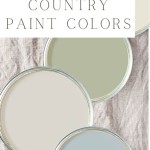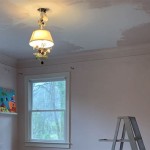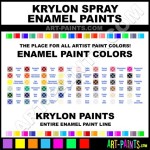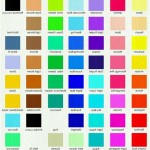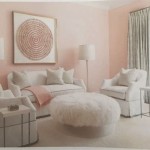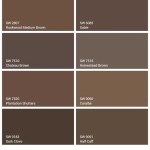Choosing The Best Cabinet Paint Color For Your Home Interior
Selecting the optimal paint color for kitchen or bathroom cabinets represents a significant decision in interior design. The chosen color profoundly impacts the overall aesthetic of the space, influencing its mood, perceived size, and connection to other design elements. This process necessitates careful consideration of various factors, ranging from existing décor to personal preferences and the intended function of the room.
The selection of a cabinet paint color must not be approached haphazardly. Instead, it should be a deliberate process involving research, sampling, and evaluation of how the color interacts with the existing environment. A poorly chosen color can diminish the appeal of even the most well-designed kitchen or bathroom. Conversely, a well-selected hue can elevate the space, creating a harmonious and visually pleasing environment.
This article will explore key considerations in choosing the best cabinet paint color for a home interior, providing guidance on navigating the myriad options available and making an informed decision that complements the homeowner's style and enhances the overall design of the space.
Considering Existing Décor and Architectural Style
The first step in selecting a cabinet paint color involves evaluating the existing décor and architectural style of the home. The goal is to create a cohesive and unified aesthetic that reflects the overall design theme. This involves analyzing the colors of the walls, countertops, flooring, and appliances, as well as the architectural features of the room.
If the home features a traditional architectural style, such as a Victorian or Colonial, classic and timeless colors like whites, creams, and muted grays are often effective choices. These colors complement the ornate details and traditional features often found in these types of homes. For example, a creamy white can be paired with granite countertops and hardwood floors to create a warm and inviting kitchen. Alternatively, a muted gray can be used to create a sophisticated and elegant bathroom.
Conversely, if the home features a more modern or contemporary architectural style, bolder and more saturated colors can be utilized. These colors can add a pop of personality and visual interest to a minimalist space. Deep blues, greens, and even black can be effective choices for modern kitchens and bathrooms. However, it is important to use these colors judiciously and balance them with neutral elements to prevent the space from feeling overwhelming or claustrophobic.
Furthermore, the color of the existing countertops and appliances should be carefully considered. If the countertops are a warm color, such as beige or brown, it is best to choose a cabinet paint color that complements these tones. Similarly, if the appliances are stainless steel, a cooler color palette, such as grays or blues, may be more appropriate. Ultimately, the goal is to create a harmonious balance between all the elements in the room.
Analyzing the lighting within the space is also crucial. Natural light will affect how a color appears. A color that looks vibrant in a room with ample natural light may appear dull in a room with limited natural light. Artificial lighting, such as fluorescent or incandescent bulbs, can also alter the appearance of colors. It is advisable to test paint samples under different lighting conditions to ensure that the chosen color looks its best in the space.
Understanding Color Psychology and its Impact
Color psychology plays a significant role in interior design, influencing mood, emotions, and overall perception of space. Understanding the psychological effects of different colors can help homeowners choose cabinet paint colors that create the desired atmosphere in their kitchens and bathrooms. Each color evokes specific feelings and associations, which should be considered in relation to the intended function of the room.
Blue, for instance, often evokes feelings of calmness, serenity, and tranquility. It is a popular choice for bathrooms, where relaxation and rejuvenation are primary goals. However, darker shades of blue can also be used in kitchens to create a sophisticated and elegant atmosphere. Green is associated with nature, growth, and harmony. It is a versatile color that can be used in both kitchens and bathrooms to create a sense of freshness and vitality. Yellow is a cheerful and optimistic color that can brighten up any space. It is often used in kitchens to create a warm and inviting atmosphere.
Red, on the other hand, is a bold and energetic color that is associated with passion and excitement. While it can be a stimulating color, it is generally not recommended for large surfaces, as it can be overwhelming. Instead, red can be used as an accent color to add a pop of visual interest. White is a classic and versatile color that is associated with cleanliness, purity, and simplicity. It is a popular choice for both kitchens and bathrooms because it creates a sense of spaciousness and light.
Gray is a neutral color that is associated with sophistication, elegance, and balance. It is a versatile color that can be used in a variety of settings, from traditional to modern. Darker shades of gray can create a dramatic and moody atmosphere, while lighter shades of gray can create a calming and serene atmosphere. Black is a bold and dramatic color that is associated with power, sophistication, and mystery. It is often used as an accent color to add a touch of elegance and drama to a space.
It is crucial to consider the psychological impact of the chosen cabinet paint color on the overall feeling of the room. A color that is too stimulating can be overwhelming in a space where relaxation is desired. Conversely, a color that is too muted can be uninspiring in a space where energy and creativity are needed. The goal is to strike a balance between aesthetics and psychology to create an environment that is both visually appealing and emotionally balanced.
Exploring Different Paint Finishes and Their Effects
In addition to color, the paint finish significantly impacts the appearance and durability of kitchen and bathroom cabinets. Different finishes offer varying levels of sheen, durability, and ease of cleaning. Selecting the appropriate finish is crucial for achieving the desired aesthetic and ensuring the longevity of the paint job. The most common paint finishes for cabinets include matte, eggshell, satin, semi-gloss, and gloss.
Matte finishes have very little shine and provide a flat, non-reflective appearance. They are often used to create a soft and understated look. However, matte finishes are not as durable or easy to clean as other finishes, making them less suitable for high-traffic areas like kitchens and bathrooms. Eggshell finishes have a slightly higher sheen than matte finishes and offer a subtle, velvety appearance. They are more durable and easier to clean than matte finishes, making them a better choice for cabinets. However, they are still not as durable as satin or semi-gloss finishes.
Satin finishes offer a moderate level of sheen and provide a smooth, velvety appearance. They are durable, easy to clean, and resistant to scratches and scuffs, making them a popular choice for kitchen and bathroom cabinets. Semi-gloss finishes have a higher sheen than satin finishes and provide a more reflective appearance. They are very durable, easy to clean, and resistant to moisture, making them an excellent choice for kitchens and bathrooms. However, semi-gloss finishes can highlight imperfections in the cabinet surface, so it is important to prepare the surface properly before painting.
Gloss finishes have the highest sheen and provide a very reflective, almost mirror-like appearance. They are extremely durable, easy to clean, and resistant to moisture, making them a good choice for kitchens and bathrooms. However, gloss finishes can be too shiny for some homeowners and can also highlight imperfections in the cabinet surface. They are often used for modern and contemporary designs where a sleek, high-impact look is desired.
When selecting a paint finish for cabinets, it is important to consider the room's function, the desired aesthetic, and the level of maintenance required. For high-traffic areas like kitchens and bathrooms, a durable and easy-to-clean finish like satin or semi-gloss is recommended. For a more understated look, an eggshell finish may be a better choice. Ultimately, the chosen finish should complement the color and style of the cabinets and enhance the overall design of the space.
Prior to applying any paint, proper surface preparation is crucial. This includes cleaning the cabinets thoroughly, sanding them to create a smooth surface, and applying a primer to ensure proper adhesion of the paint. Neglecting these steps can result in a poor paint job that is prone to chipping, peeling, and other damage.

Choosing The Best Paint Color For Your Kitchen Moon Painting

Color Schemes For Kitchens With Dark Cabinets Kind Home Solutions

14 Kitchen Cabinet Color Combinations To Try

How To Choose Your Kitchen S Best Cabinet Paint Colors Kylie M Interiors

70 Top Kitchen Paint Colors Best 2024

Best Kitchen Paint Color Options Forbes Home
How To Choose Your Kitchen S Best Cabinet Paint Colors Kylie M Interiors

All The Paint Colors In Our Home House Of Silver Lining

Best Paint For Your Next Cabinet Project The Home Depot

How To Choose Your Kitchen S Best Cabinet Paint Colors Kylie M Interiors
Related Posts

